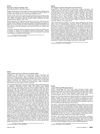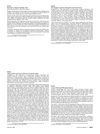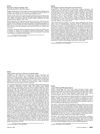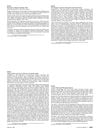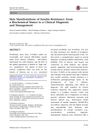Breakthroughs in the Diagnosis and Treatment of Male and Female Pattern Hair Loss
January 2016
in “
Journal of clinical & experimental dermatology research
”
androgenetic alopecia dermoscopy polycystic ovary syndrome diabetes hypertension hyperlipidaemia arrector pili muscle hair follicle miniaturization alopecia areata gene association studies androgen receptor gene oral antiandrogen oral minoxidil topical stemoxydine cosmetic camouflage scalp micropigmentation hair transplantation PCOS high blood pressure high cholesterol Propecia Rogaine L'Oreal Stemoxydine hair tattoo

TLDR New methods can diagnose hair loss by examining the scalp and can treat it with a mix of oral and topical medications, along with cosmetic procedures like hair transplants.
The document, "Breakthroughs in the Diagnosis and Treatment of Male and Female Pattern Hair Loss" from 2015, discussed the diagnosis and treatment of androgenetic alopecia, a common form of hair loss in both men and women. The diagnosis is typically made through visual inspection and dermoscopy examination of the frontal scalp. In some women, further investigations may be needed to identify contributing factors and comorbidities such as polycystic ovary syndrome, diabetes, hypertension, and hyperlipidaemia. The paper introduced a new model for scalp hair growth based on 3-D reconstructions of the arrectorpili muscle, explaining why individuals with androgenetic alopecia can lose up to 50% of their scalp hair volume without visible balding. It also discussed why hair follicle miniaturization is fully reversible in alopecia areata but only partially reversible in androgenetic alopecia. Gene association studies identified candidate genes and epigenetic silencing of the androgen receptor gene on the occipital scalp, explaining the inheritance and pattern of androgenetic alopecia. The paper concluded that combination therapy of oral antiandrogen and oral minoxidil with topical stemoxydine can reduce hair shedding, arrest natural progression, and stimulate partial hair regrowth. Cosmetic camouflage, scalp micropigmentation, and hair transplantation were also mentioned as complementary to medical therapy.

